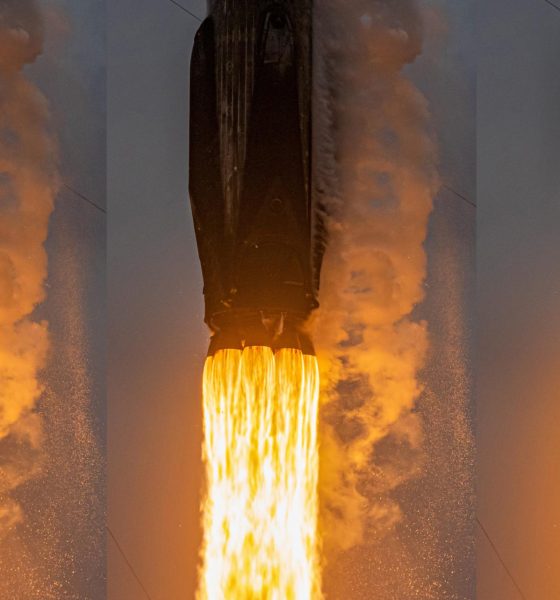Update #2: SpaceX has successfully delivered Starlink 4-4 – batch of 52 new satellites – to low Earth orbit (LEO), completing the first of three back-to-back Falcon 9 launches scheduled less than three days apart.
Starlink 4-4 marks the 98th successful Falcon landing, the first time SpaceX has performed a non-polar Starlink launch from its West Coast pad, and the first time a Falcon 9 booster has completed 11 orbital-class launches and spaceflights. Up next, SpaceX is scheduled to launch Turkey’s Turksat 5B geostationary communications satellite out of its Cape Canaveral, Florida LC-40 pad. Falcon 9 could lift off as early as 10:58 pm EDT, Saturday, December 18th (03:58 UTC 19 Dec) – just 15 hours after Starlink 4-4. Set in September 2021, SpaceX’s current record is two launches in ~44 hours.
Update: SpaceX’s second dedicated West Coast Starlink launch has slipped to no earlier than (NET) 1:24 am PDT (09:24 UTC) on Saturday, December 18th. Headed to an orbit unusual for a Vandenberg Space Force Base launch, Starlink 4-4 could now lift off just 18 hours before a different SpaceX mission – Turksat 5B – lifts off from the opposite side of the country.
Barring delays to Cargo Dragon’s CRS-24 space station resupply mission, which remains scheduled for 5:06 am EDT on December 21st, that means that SpaceX is now on track to launch three Falcon 9 rockets in three days (less than 73 hours).
SpaceX appears to be on track to round out a record-breaking year with three Falcon 9 launches in four days.
With the diverse trio of missions, SpaceX will orbit another batch of laser-linked Starlink satellites, deliver a large communications satellite to geostationary transfer orbit (GTO), send a Dragon to space for sixth time this year, and break at least two company records. The first mission, known as Starlink 2-3, could occur as early as the morning of December 17th, kicking off an incredibly busy period of launches – and not just for SpaceX.
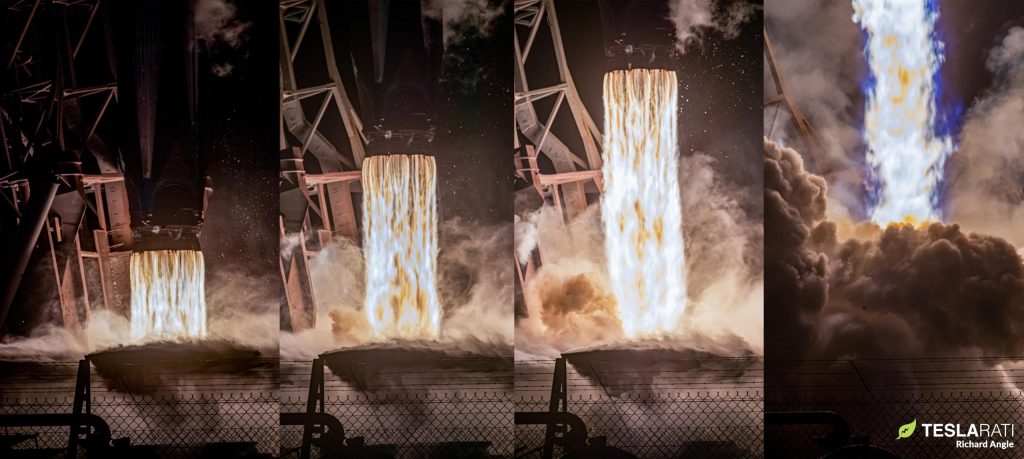
Starlink 2-3
Referring to the fact that the mission will be the third launch for the second distinct group or ‘shell’ of Starlink satellites, Starlink 2-3 will actually be the second dedicated launch to a semi-polar orbit, leapfrogging Starlink 2-2 for unknown reasons after Starlink 2-1’s successful September launch. Originally scheduled to launch in mid-October, SpaceX was forced to stand down just a few days before liftoff for unknown reasons and at least a week or two of delays soon put Starlink 2-3 at risk of clashing with the company’s upcoming NASA DART launch, which unsurprisingly took precedence. SpaceX successfully launched the Double Asteroid Redirection Test (DART) mission on November 24th.
Late on December 13th, tugboat Scorpius likely departed Port of Long Beach with SpaceX drone ship Of Course I Still Love You (OCISLY) in tow – a fairly airtight confirmation that a SpaceX launch is just a handful of days away. Based on safety Notices to Airmen and Mariners (NOTAMs/NOTMARs), Starlink 2-3 is scheduled to launch sometime between 12am and 6am PDT (UTC-8) on Friday, December 17th. If accurate and SpaceX stays on schedule, Falcon 9 could lift off from the company’s Vandenberg SLC-4E launch pad with Starlink 2-3 in tow just 22 days after a different Falcon 9 rocket launched DART – smashing the pad’s current 36-day turnaround record by almost 40%.
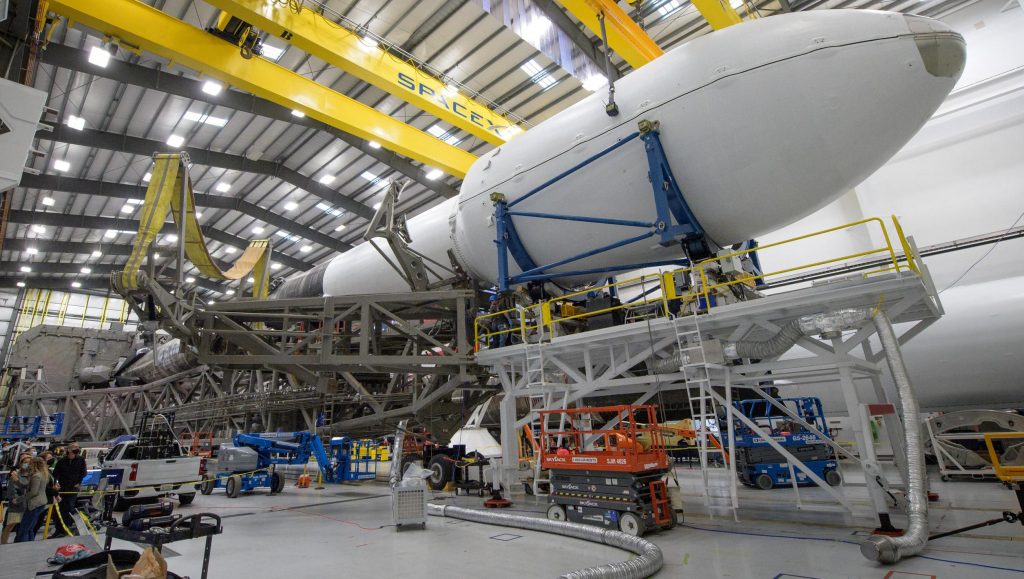
Aside from drastically increasing the maximum theoretical launch cadence SpaceX’s West Coast pad is capable of supporting, Starlink 2-3 is also expected – as it was in October – to fly on Falcon 9 booster B1051, potentially making the mission the first time a liquid rocket booster has completed eleven orbital-class launches. B1051 debuted in March 2019, sending an uncrewed Crew Dragon on its way to orbit for the first time. Before SpaceX’s Starlink launch cadence fell off a cliff in the second half of 2021, B1051 completed its tenth launch on May 9th, 2021, averaging one launch every ~80 days over a two-year career. Starlink 2-3 will be B1051’s first launch in 7 months and eleventh launch in 33 months.
Turksat 5B
As early as 11:58 pm EDT (UTC-5) on Saturday, December 18th, another Falcon 9 rocket is scheduled to launch Turkey’s Turksat 5B geostationary communications satellite from SpaceX’s Cape Canaveral LC-40 pad. There’s a good chance that former Falcon Heavy booster B1052 – recently converted into a Falcon 9 after more than two years in storage – will be assigned to the mission, which is set to be SpaceX’s 30th orbital launch in 2021.
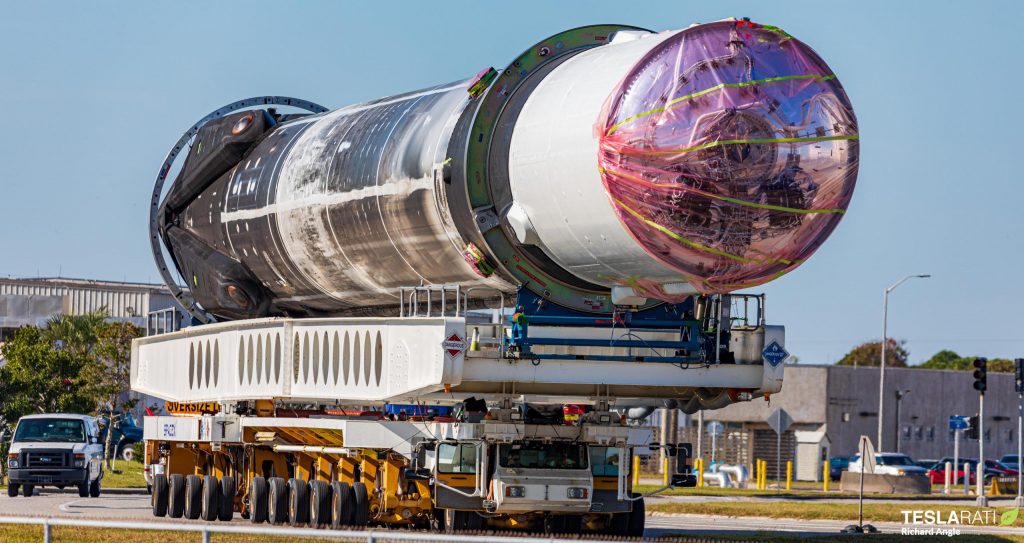
CRS-24 and more!
Finally, a different Falcon 9 (possibly B1062 or even a new booster entirely) is scheduled to launch a new Cargo Dragon 2 spacecraft on CRS-24 – potentially the company’s 23rd operational International Space Station (ISS) resupply run since October 2012. It will be Falcon 9’s sixth Dragon launch of 2021 – another record for SpaceX and the spacecraft. If the schedule holds, CRS-24 could lift off as early as 5:06 am EDT (UTC-5) on Tuesday, December 21st and would be SpaceX’s third Falcon 9 launch in roughly 100 hours (a little over four days). CRS-24 is expected to be SpaceX’s 31st and final launch of 2021, beating out the 26-launch record it set just last year.
However, the rest of the world isn’t quite finished. As early as the day after CRS-24, an Ariane 5 rocket is scheduled to launch the almost $10 billion, NASA-built James Webb Space Telescope (JWST). Decades in the making, JWST will be the single most expensive payload and the largest space telescope ever launched and is functionally irreplaceable and hard (but not impossible, if the political will is there) to repair, making it perhaps the most universally nerve-wracking uncrewed launch in the history of spaceflight.

News
Tesla’s Elon Musk posts updated Robotaxi fleet ramp for Austin, TX
Musk posted his update on social media platform X.

Elon Musk says Tesla will “roughly double” its supervised Robotaxi fleet in Austin next month as riders report long wait times and limited availability across the pilot program in the Texas city. Musk posted his update on social media platform X.
The move comes as Waymo accelerates its U.S. expansion with its fully driverless freeway service, intensifying competition in autonomous mobility.
Tesla to increase Austin Robotaxi fleet size
Tesla’s Robotaxi service in Austin continues to operate under supervised conditions, requiring a safety monitor in the front seat even as the company seeks regulatory approval to begin testing without human oversight. The current fleet is estimated at about 30 vehicles, StockTwists noted, and Musk’s commitment to doubling that figure follows widespread rider complaints about limited access and “High Service Demand” notifications.
Influencers and early users of the Robotaxi service have observed repeated failures to secure a ride during peak times, highlighting a supply bottleneck in one of Tesla’s most visible autonomy pilots. The expansion aims to provide more consistent availability as the company scales and gathers more real-world driving data, an advantage analysts often cite as a differentiator versus rivals.
Broader rollout plans
Tesla’s Robotaxi service has so far only been rolled out to Austin and the Bay Area, though reports have indicated that the electric vehicle maker is putting in a lot of effort to expand the service to other cities across the United States. Waymo, the Robotaxi service’s biggest competitor, has ramped its service to areas like the San Francisco Bay Area, Los Angeles, and Phoenix.
Analysts continue to highlight Tesla’s long-term autonomy potential due to its global fleet size, vertically integrated design, and immense real-world data. ARK Invest has maintained that Tesla Robotaxis could represent up to 90% of the company’s enterprise value by 2029. BTIG analysts, on the other hand, added that upcoming Full Self-Driving upgrades will enhance reasoning, particularly parking decisions, while Tesla pushes toward expansions in Austin, the Bay Area, and potentially 8 to 10 metro regions by the end of 2025.
News
Tesla finishes its biggest Supercharger ever with 168 stalls
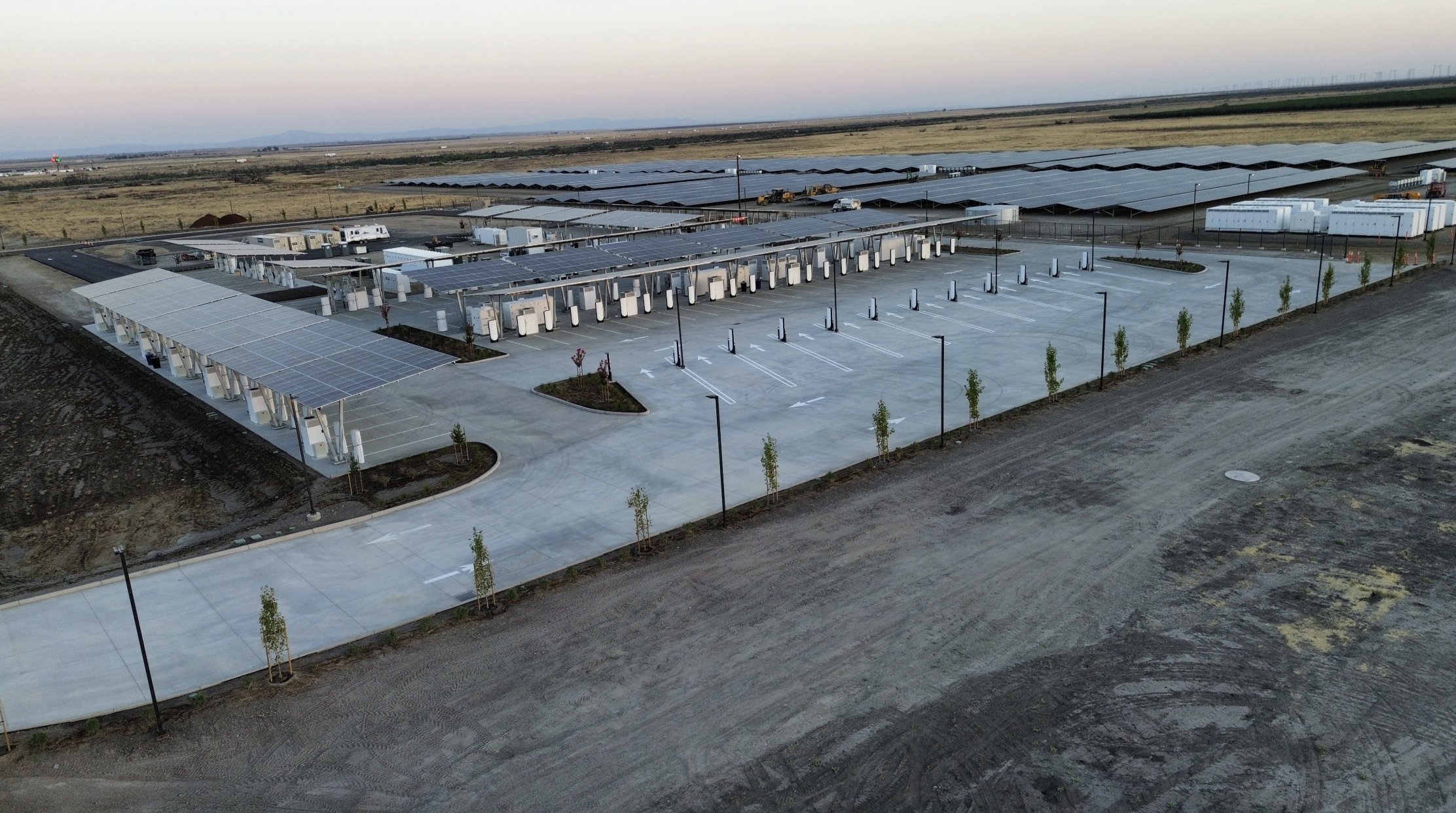
Tesla has finished construction at its biggest Supercharger ever in Lost Hills, California, and all 168 stalls are officially open as of today.
After several years of development, the company has officially announced that the Lost Hills Supercharger, known as Project Oasis, is officially open with 168 stalls active and available to drivers.
Tesla announced the completion of the Lost Hills Supercharger on Tuesday, showing off the site, which is powered by 10 Megapack batteries for storage and is completely independent of the grid, as it has 11 MW of solar panels bringing energy to the massive Battery Energy Storage System (BESS).
All 168 Stalls at the Tesla Supercharger in Lost Hills, California are officially open! pic.twitter.com/eo9xmZyUNB
— TESLARATI (@Teslarati) November 25, 2025
This is the largest Supercharger in the world and opens just in time for the Thanksgiving holiday, which is the most-traveled weekend of the year in the United States.
Spanning across 30 acres, it was partially opened back in July 2025 as Tesla opened just 84 of the 168 stalls at the site. However, Tesla finished certifying the site recently, which enabled the Supercharger to open up completely.
The site generates roughly 20 GWh of energy annually, which is enough to power roughly 1,700 homes. The launch of this site specifically is massive for the company as it plans to launch more Superchargers in more rural areas, making charging more available for cross-country rides that require stops in more remote regions of the United States.
This is perhaps the only weak point of Tesla’s massive charging infrastructure.
It has some features that are also extremely welcome for some owners, including things like pull-through stalls for those who tow, an idea that was extremely popular following the launch of the Cybertruck.
Tesla has over 70,000 active Superchargers across the world. The company has also made efforts to create unique experiences at some of the stops, most notably with its Tesla Diner, located on Santa Monica Boulevard in Los Angeles.
That Supercharger has two massive drive-in movie theaters and will soon transition to a full-service restaurant following the departure of its executive chef, Eric Greenspan.
Elon Musk
Elon Musk proposes Grok 5 vs world’s best League of Legends team match
Musk’s proposal has received positive reception from professional players and Riot Games alike.

Elon Musk has proposed a high-profile gaming challenge for xAI’s upcoming Grok 5. As per Musk, it would be interesting to see if the large language model could beat the world’ best human League of Legends team with specific constraints.
Musk’s proposal has received positive reception from professional players and Riot Games alike, suggesting that the exciting exhibition match might indeed happen.
Musk outlines restrictions for Grok
In his post on X, Musk detailed constraints to keep the match competitive, including limiting Grok to human-level reaction times, human-speed clicking, and viewing the game only through a camera feed with standard 20/20 vision. The idea quickly circulated across the esports community, drawing commentary from former pros and AI researchers, as noted in a Dexerto report.
Former League pro Eugene “Pobelter” Park expressed enthusiasm, offering to help Musk’s team and noting the unique comparison to past AI-versus-human breakthroughs, such as OpenAI’s Dota 2 bots. AI researcher Oriol Vinyals, who previously reached Grandmaster rank in StarCraft, suggested testing Grok in RTS gameplay as well.
Musk welcomed the idea, even responding positively to Vinyals’ comment that it would be nice to see Optimus operate the mouse and keyboard.
Pros debate Grok’s chances, T1 and Riot show interest
Reactions weren’t universally optimistic. Former professional mid-laner Joedat “Voyboy” Esfahani argued that even with Grok’s rapid learning capabilities, League of Legends requires deep synergy, game-state interpretation, and team coordination that may be difficult for AI to master at top competitive levels. Yiliang “Doublelift” Peng was similarly skeptical, publicly stating he doubted Grok could beat T1, or even himself, and jokingly promised to shave his head if Grok managed to win.
T1, however, embraced the proposal, responding with a GIF of Faker and the message “We are ready,” signaling their willingness to participate. Riot Games itself also reacted, with co-founder Marc Merrill replying to Musk with “let’s discuss.” Needless to say, it appears that Riot Games in onboard with the idea.
Though no match has been confirmed, interest from players, teams, and Riot suggests the concept could materialize into a landmark AI-versus-human matchup, potentially becoming one of the most viewed League of Legends events in history. The fact that Grok 5 will be constrained to human limits would definitely add an interesting dimension to the matchup, as it could truly demonstrate how human-like the large language model could be like in real-time scenarios.
Tesla has passed a key milestone, and it was one that CEO Elon Musk initially mentioned more than nine years ago when he published Master Plan, Part Deux.
As per Tesla China in a post on its official Weibo account, the company’s Autopilot system has accumulated over 10 billion kilometers of real-world driving experience.
Tesla China’s subtle, but huge announcement
In its Weibo post, Tesla China announced that the company’s Autopilot system has accumulated 10 billion kilometers of driving experience. “In this respect, Tesla vehicles equipped with Autopilot technology can be considered to have the world’s most experienced and seasoned driver.”
Tesla AI’s handle on Weibo also highlighted a key advantage of the company’s self-driving system. “It will never drive under the influence of alcohol, be distracted, or be fatigued,” the team wrote. “We believe that advancements in Autopilot technology will save more lives.”
Tesla China did not clarify exactly what it meant by “Autopilot” in its Weibo post, though the company’s intense focus on FSD over the past years suggests that the term includes miles that were driven by FSD (Beta) and Full Self-Driving (Supervised). Either way, 10 billion cumulative miles of real-world data is something that few, if any, competitors could compete with.
Advertisement
–>
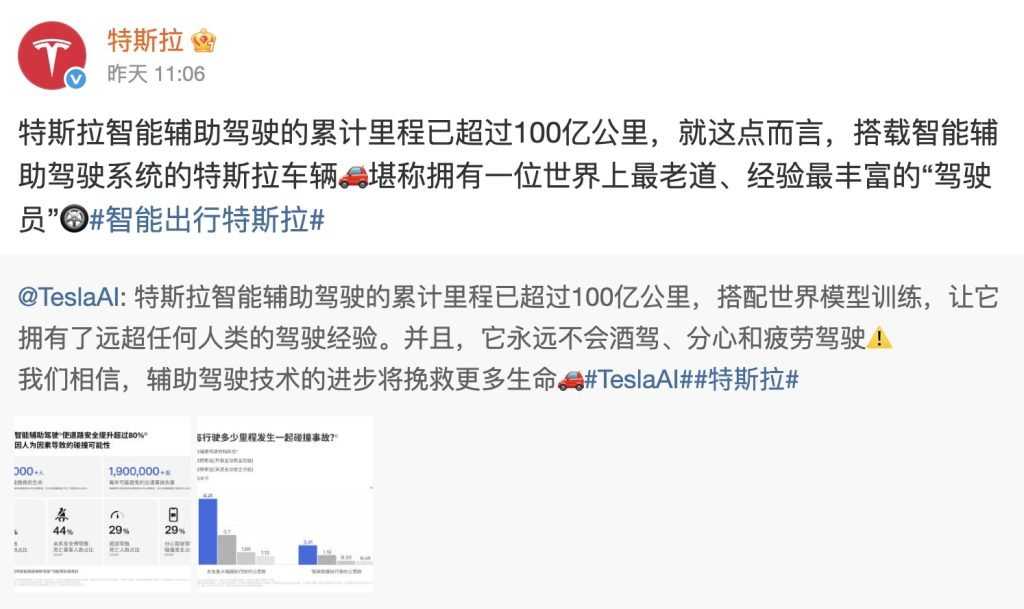
Elon Musk’s 10-billion-km estimate, way back in 2016
When Elon Musk published Master Plan Part Deux, he outlined his vision for the company’s autonomous driving system. At the time, Autopilot was still very new, though Musk was already envisioning how the system could get regulatory approval worldwide. He estimated that worldwide regulatory approval will probably require around 10 billion miles of real-world driving data, which was an impossible-sounding amount at the time.
“Even once the software is highly refined and far better than the average human driver, there will still be a significant time gap, varying widely by jurisdiction, before true self-driving is approved by regulators. We expect that worldwide regulatory approval will require something on the order of 6 billion miles (10 billion km). Current fleet learning is happening at just over 3 million miles (5 million km) per day,” Musk wrote.
It’s quite interesting but Tesla is indeed getting regulatory approval for FSD (Supervised) at a steady pace today, at a time when 10 billion miles of data has been achieved. The system has been active in the United States and has since been rolled out to other countries such as Australia, New Zealand, China, and, more recently, South Korea. Expectations are high that Tesla could secure FSD approval in Europe sometime next year as well.

